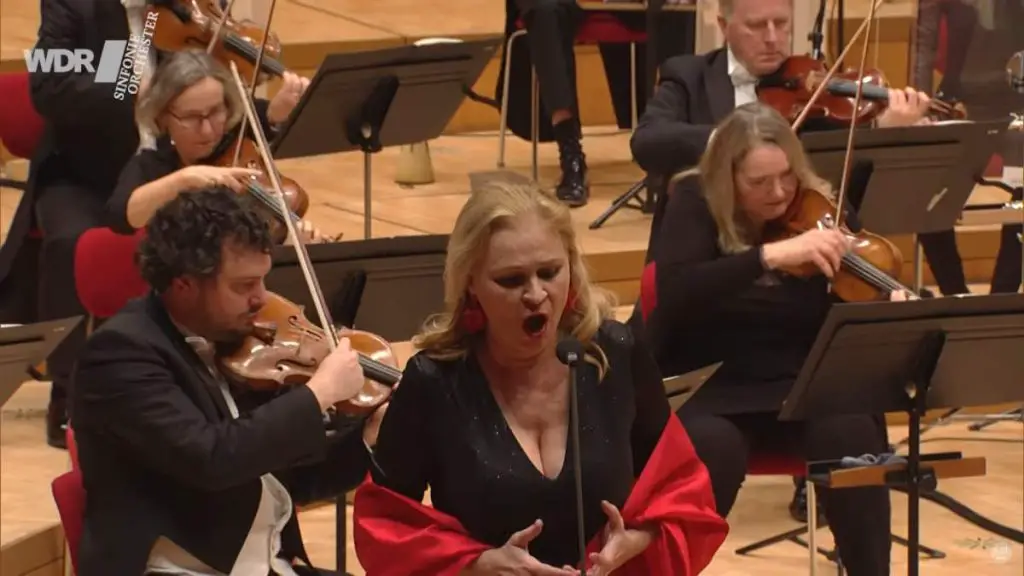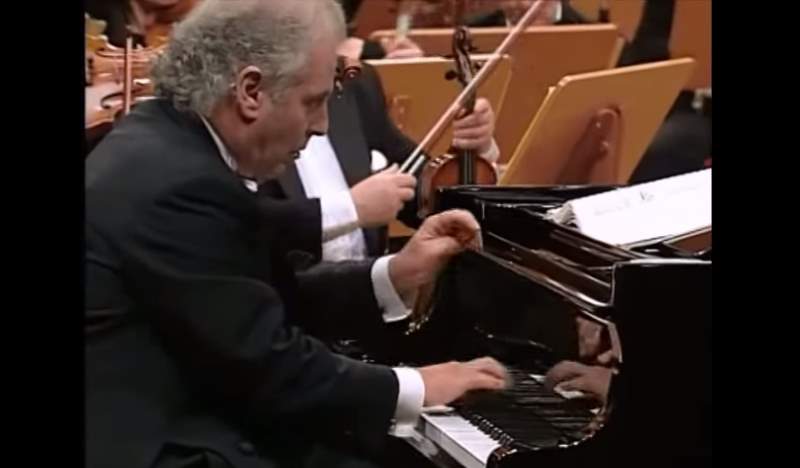French violinist Manon Galy and the Cuban-born French pianist Jorge González-Buajasán perform Manuel de Falla’s Danse Espagnole (Spanish Dance), originally the Dance from Falla’s 1913 opera La vida breve (Spanish Life is Short or The Brief Life), which was arranged for violin and piano by the Austrian-born American violinist and composer Friedrich “Fritz” Kreisler (February 2, 1875 – January 29, 1962) in 1926.
Manuel de Falla’s Danse espagnole
Manuel de Falla’s “Danse Espagnole” (Spanish Dance) is a celebrated piece that showcases the composer’s affinity for integrating traditional Spanish musical elements into classical forms. Manuel de Falla, one of Spain’s most important composers in the early 20th century, had a profound influence on the national musical identity of Spain and was known for his ability to blend folkloric themes with sophisticated orchestral techniques.
The “Danse espagnole” is actually part of a larger work, originally found in de Falla’s opera “La vida breve” (Life is Short), which was first performed in 1913. This opera is notable for its dramatic and emotive content, as well as its rich orchestration and incorporation of Andalusian folk music elements. The “Danse espagnole” is extracted from the second act of the opera and has gained popularity as a stand-alone piece, often performed in concert settings.
Musically, the “Danse Espagnole” is characterized by its fiery rhythms, passionate melodies, and vivid orchestration. It captures the essence of Spanish dance music, with its flamenco influences, rhythmic complexity, and passionate expressiveness. The dance is known for its driving rhythms, which are typical of flamenco music, and its use of castanets and other percussive elements adds to the authentic Spanish flavor.
The piece typically begins with a dramatic introduction, leading into a fast, rhythmic dance section. The melody is often played by the strings, with the guitar (or harp) providing a distinctive flamenco rhythm. The orchestration is rich and colorful, with de Falla expertly using the instruments to create a sound that is both lush and distinctly Spanish.
As a concert piece, “Danse espagnole” has been arranged for various ensembles and solo instruments. One of the most popular arrangements is for violin and piano, which allows the violinist to showcase their technical skill and expressive capabilities. The piece has also been transcribed for classical guitar, a fitting tribute to its Spanish origins.
Manon Galy
Manon Galy was born in Toulouse and began the violin at the age of 7 years.
Her studies will take her from the CRR of Toulouse to that of Paris, then to the CNSMDP in the class of Roland Daugareil, Suzanne Gessner, and Christophe Poiget, to the Hochschule in Munich at Julia Fischer or to the Queen Elisabeth Musical Chapel in Waterloo with the trio Zeliha. Manon was also part of the Vivaldi promotion of the Philippe Jaroussky Musical Academy.
Manon won numerous international competitions such as the International House of Lyon Music Competition in 2021 in which she won the 1st prize as well as all the special sonata prizes with Jorge Jorge González-Buajasán, the Jascha Heifetz International Competition in Vilnius (3rd prize and public price) the Marie Cantagrill competitions, Ginette Neveu, the Centre’s Musicales, UFAM.

As a soloist, Manon performs regularly with various international orchestras; the Vienna and Salzburg chamber orchestras, the Capitol Orchestra of Toulouse, the Lausanne chamber orchestra, the Lithuanian National Symphony orchestra, the ONPL, the Philharmonic Orchestra of Nice.
She thus collaborates with great chefs such as Renaud Capuçon, Aziz Shokhakimov, Victorien Vanoosten, Gabor Tackaks-Nagy, Patrick Davin, and Simone Menezes.
In France and the world, Manon is a regular guest of major festivals such as the International Piano Festival of the Roque of Anthéron, Aix-en-Provence Easter festivals, Deauville, Colmar, the Evian Musical Meetings, the Chaise-Dieu festival, Al-Bustan Festival (Lebanon) the Crazy Day of Nantes and Tokyo (Japan).
And thus occurs in mythical rooms like the Paris Philharmonic, the Vienna Konzerthaus, the Musical Seine, the Vilnius Philharmonic, the RHOM Theater Kyoto, the Grand Théâtre de Provence, the Grange au Lac, the Reinier III auditorium from Monte -Carlo among others.
At the turn of these concerts, Manon has the chance to share the scene with many artists such as Renaud Capuçon, Corina Belcea, the Modigliani and Zaïde quartets, Marie Chilemme, Marie-Joseph Judde, Marc Coppey, Aurélien Pascal, Yan Levionnois, Yann Dubost, Paul Zientara, Violaine Despeyroux, the whole Ouran…
A chambermaid in the soul, Manon Galy founded in 2018 the Trio Zeliha with Jorge González-Buajasán and Maxime Quennesson. Their first disc was released in 2020 by the Mirare label and is praised by critics (5 tuning fork, 5 stars of Classica, Editor’s choice at Gramophone magazine) Menahem Pressler speaks of an “exceptional recording”.
Sources
- Manon Galy’s official website
- Baroque Concert with Countertenor Jakub Józef Orlinski [Pieces by Handel, Cavalli, Boretti & others] - October 12, 2024
- Bruch: Violin Concerto No. 1 [Janine Jansen] - October 11, 2024
- Cecilia Bartoli sings Ombra Mai Fu [From Händel’s Serse] - October 10, 2024

